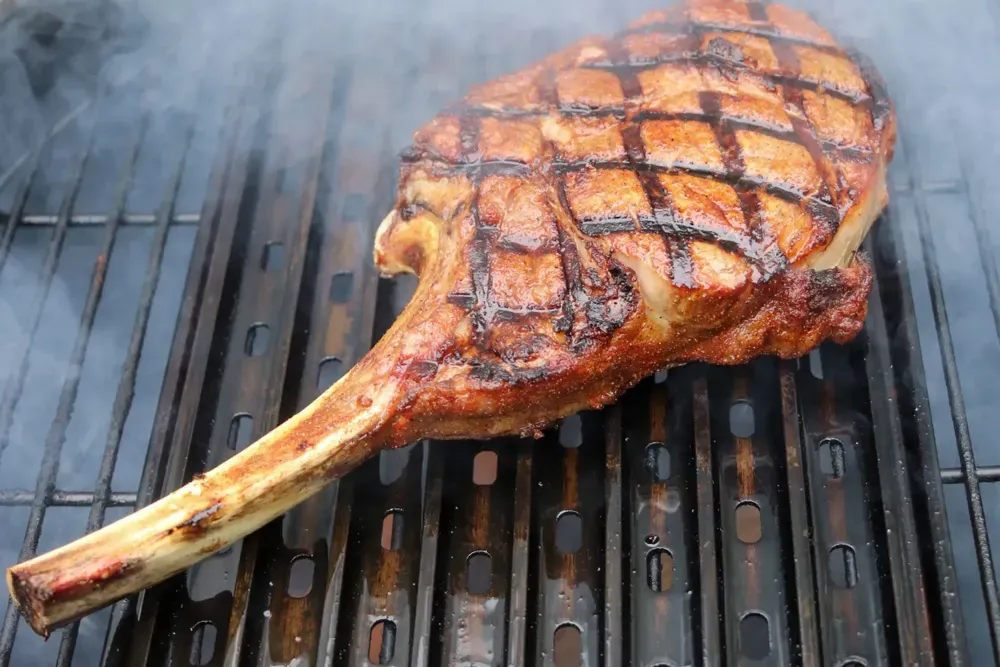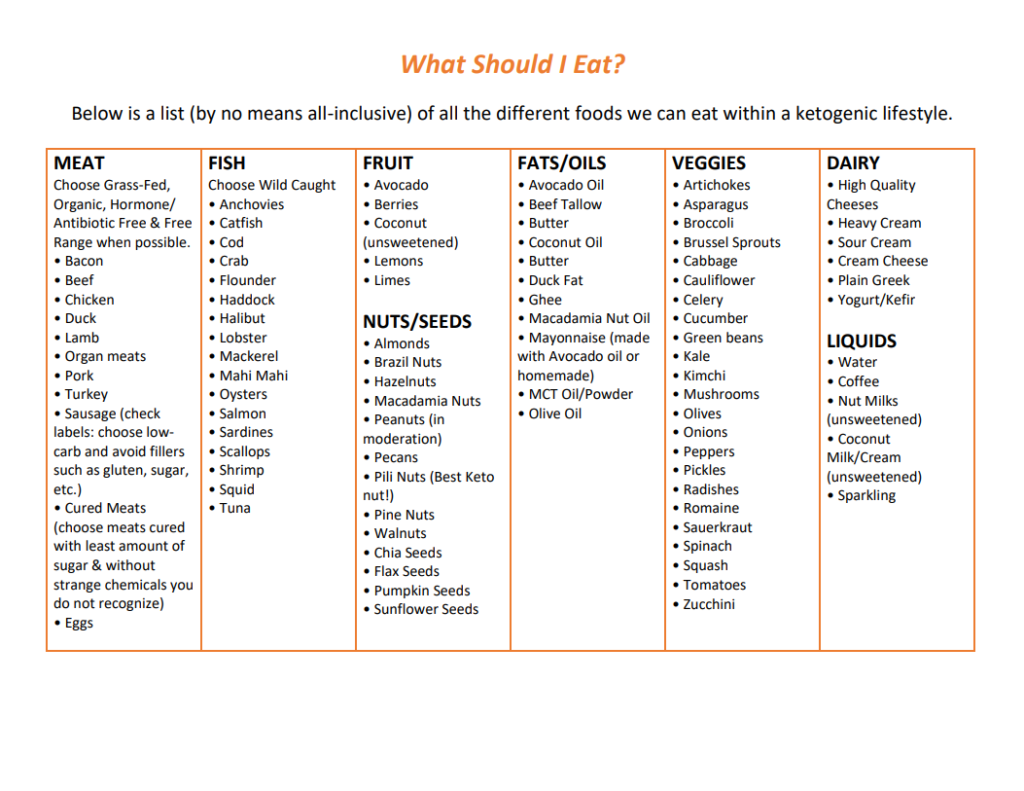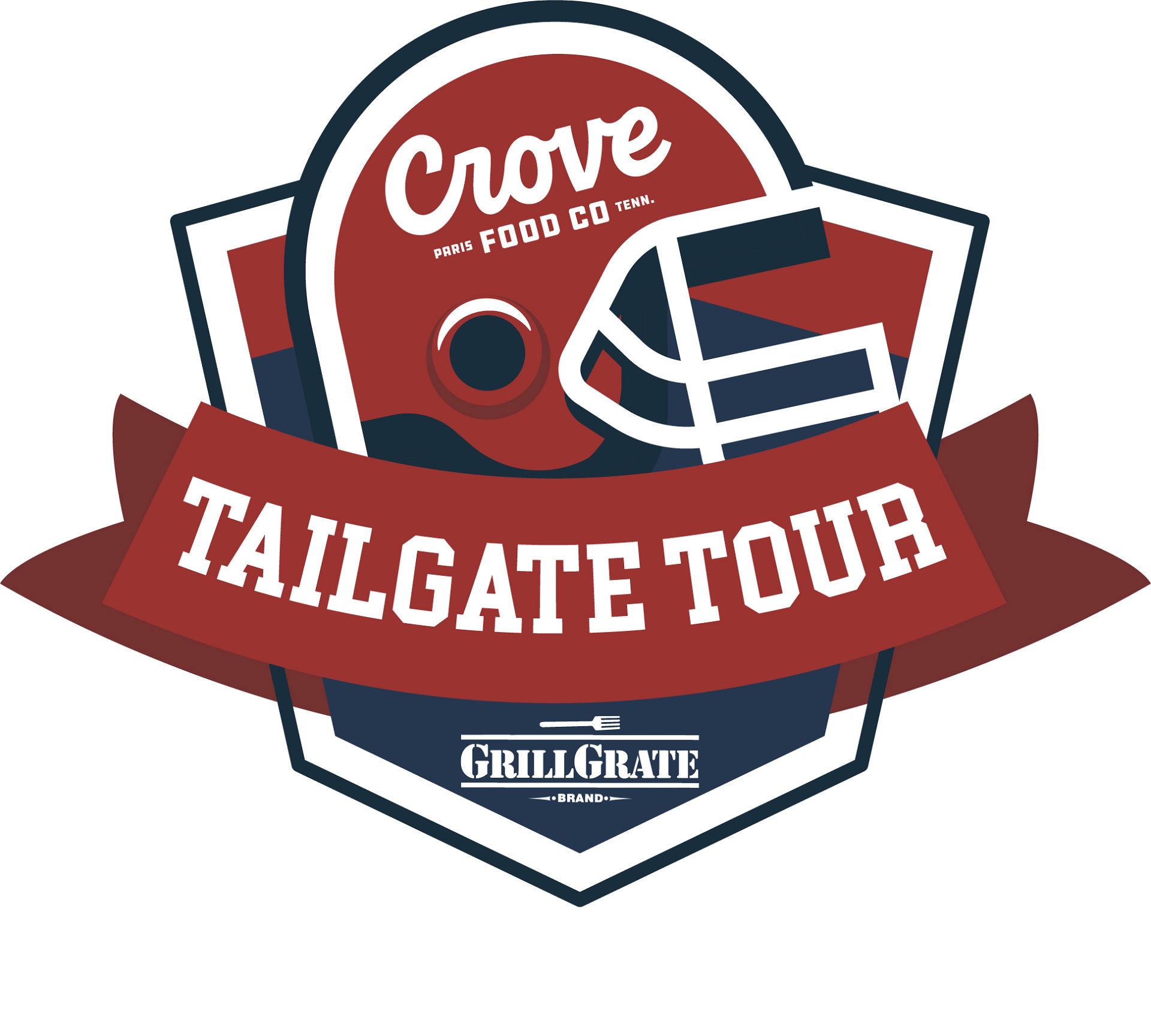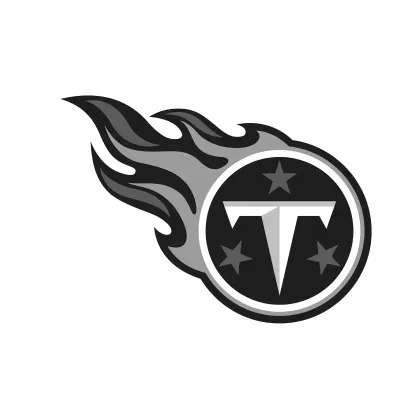With Spring right around the corner, Summer won’t be far behind. It’s time to get serious about eating better and exercising more to get beach-body ready for warmer weather!
If you’ve decided to make changes to your diet by incorporating more protein and vegetables, you’re not alone. Diets such as Keto, Paleo, Whole 30, and Carnivore have gained increasing popularity with foodies and fitness gurus alike.
All of the above diets have an increased focus on protein and fat (the Carnivore diet is actually all protein). Beef, Poultry and Fish are all so much better when grilled, and even better when grilled on GrillGrates.

Danny Vega, creator of the Carnivore Keto Cut.
Here in the office, we’ve been especially focused on the Keto and Carnivore Diets and how we can turn our love of all things grilled meat into smaller waistlines for summer. We’ve recently partnered with Danny Vega of the Fat Fueled Family Podcast who will be working with both the GrillGrate and Rec Teq communities on Facebook to drive us to eat better, move more and be better versions of ourselves over the next 30 days.
A native of Miami, Florida, Danny received his bachelor’s degree in political science from Columbia University in 2004, where he played football and was a three-time Dean’s List recipient. Danny earned his Master’s of Science in Human Performance from the University of Florida, where he worked with the national championship men’s basketball team along with the tennis and golf programs. He then went on to become the Strength & Conditioning coordinator for VCU basketball, helping the Rams to the 2007 conference champions and making it to the second round of the NCAA tournament. As a raw powerlifter, he had meet bests of 640 squat in wraps (610 raw), 400 bench, and 700 deadlift. He has competed in indoor rowing, where he has personal bests of 1:19.9 in the 500 meter, 14.5 in the 100 meter, and 389 meters in the minute for distance—all 3 of them are Florida state records.
Needless to say – he’s an expert in optimizing his diet to maximize performance.
Below is an excerpt from an article he’s written on the Keto diet…
Introduction to the Ketogenic Diet
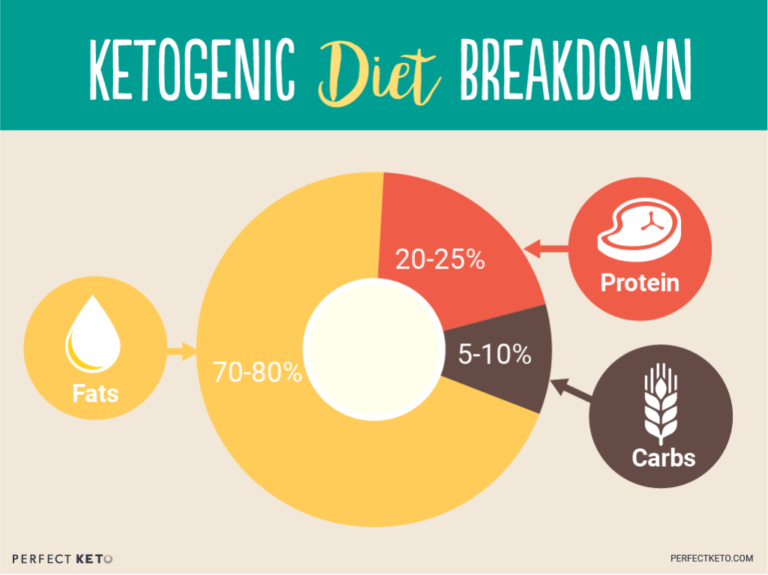 Curious about this whole “keto” thing? You’ve probably heard stories from at least a few people in your network who have transformed their health and their bodies in some way or another by switching to a ketogenic diets. You may have heard how this amazing lifestyle can improve your cognitive function and eliminate brain fog, deliver more consistent energy with less ups and downs through the day, decrease the inflammation in your body driving all those aches and pains, and decrease hunger and cravings.
Curious about this whole “keto” thing? You’ve probably heard stories from at least a few people in your network who have transformed their health and their bodies in some way or another by switching to a ketogenic diets. You may have heard how this amazing lifestyle can improve your cognitive function and eliminate brain fog, deliver more consistent energy with less ups and downs through the day, decrease the inflammation in your body driving all those aches and pains, and decrease hunger and cravings.
Ketogenic diets have steadily increased in popularity in the past decade. Other similar diets, such as the Atkins diet and the Paleo diet paved the way. Paleo was my first love; when I was first introduced to it, I began to focus on food quality, and instead of listening to the “experts” who told us to eat less meat, less fat and more carbohydrates and processed grains, I relied on human biology, anthropology, and lastly, common sense. It was the best I had ever felt, and Keto was the next logical step. My wife and I felt amazing when we cut grains and processed sugars, but we realized how much better we felt when we restricted carbohydrates even more—all of a sudden, we were able to eat less frequently, and we never felt cravings. This makes sense; the less carbohydrates you eat, the less blood sugar swings you experience. Over time, your body switches back to a more primal metabolism that relies mainly on fat and ketones.
In the 1950’s, the consensus was that without dietary carbohydrate, our brains would starve and we would die after only a short period of time. Dr. George Cahill and his lab at Harvard University began this several decade journey to where we are now with ketogenic research. He and his lab conducted several landmark fasting studies where they found that in the absence of dietary carbohydrate, the subjects’ brain energy needs were still being met. They displayed elevated levels of ketones, and their blood sugar did not drop past a certain level. This suggested that 1) there was an alternative fuel source feeding the brain (that they didn’t quite understand yet) and 2) that the body had ways of regulating blood sugar and insulin in the absence of dietary carbohydrate.
Fast forward to modern day. It’s well established that there is no such thing as an essential carbohydrate. Our brains do need glucose, but our bodies have ways of creating that glucose, meaning that we don’t need to eat it! In fact, we wouldn’t have survived as a species if this were not the case. It turns out that fat is a cleaner, more efficient energy source. The average person can store about 2-3,000 calories of glycogen (the carbohydrates our bodies store), but even the leanest person has access to 40-100,000 calories of fat (in the form of free fatty acids). Our muscles can run on fat—the heart actually prefers it as an energy source! However, the brain cannot, so our brains rely on ketones. You may experience a boost in mental acuity, focus, and even productivity. I know I have.
So how do we reach ketosis? Simple! Cut out the carbohydrates from your diet. I will include a list of carbohydrate sources below, although it is not comprehensive, you will get an idea of what types of carbs you can eat while eating this way. That being said, it doesn’t have to be complicated. Keep it simple! You can generally find some great meal plan examples online. Here is a disclaimer, though: remember that ketosis is a metabolic state, so technically, any food can be ketogenic as long as the carbohydrates are not high enough to cause a spike in insulin that would hinder your liver from creating ketones. However, I recommend you stick to whole foods, and ditch the grains—especially wheat/gluten! My family and I have a list of non-negotiables: no wheat, no food dyes, and no processed seed oils (canola, cottonseed oil, soybean oil, basically anything that seems impossible to extract oil from without a fully functional lab). This rules out most processed food.
There will be a learning curve, but nowadays, you can find ketogenic alternatives to most of the foods you enjoy. Some may require substituting one ingredient for another, such as keto pizza (google fat head pizza dough, that’s my favorite) or removing an ingredient completely (burgers without the buns). We have sacrificed our health in the name of convenience, and our health has suffered. My hope for you is that you are committed to learn about this way of eating and do the necessary work to adapt this into your life and make it your lifestyle.
Below is a sample day of eating for me. I generally like to push breakfast back, since I like to train first thing in the morning. I feel great doing it this way, and after finishing up my morning routine, I feel like I have won the day before it has even really started.
6am – coffee blended with butter and MCT oil powder
8:30am – Eggs and bacon, or even some leftover ground beef
12pm – Cheese burgers without the bun with an avocado
5pm – Ribeye steak, or Chicken thigh (on the bone with skin on) with some cheesy cauliflower rice, or even jalapeño poppers
7pm – if I want an indulgence, I will have some full fat yogurt with blueberries or a fat bomb (there are several great fat bomb recipes online)
The key is to make it simple, and easy to follow. I understand that there are several reasons why we eat food. Viewing food only as fuel is not something most of us (myself included) can do. Sometimes we eat for pleasure. I promise you that if you are consistent—especially in the first 2-3 months—you may be able to enjoy the occasional indulgence. But don’t be surprised if you lose all desire to eat most of what you used to eat!
Danny has cultivated a unique form of the keto diet called “Carnivore Keto” that has allowed him to take his health and performance to the next level.
What is Carnivore Keto?

Click here to download Danny’s Carnivore Keto Kickstart Guide.
What does “carnivore keto” mean to me? After thinking about this and tweaking things for a few years, I have realized that sticking to ketogenic ratios and Phinney and Volek’s ranges is the way to go for me. For the most part, I eat only meat, with some dairy. I also do allow for the occasional low sugar fruit, such as avocado or zucchini (which are both pretty harmless, and versatile when it comes to what you can do with them). I think that too much protein doesn’t feel great, even if my blood ketone levels are still elevated and my blood sugar is still stable.
As far as what my menu is made up of, I avoid many vegetable oils at all costs (the main examples would be corn and safflower oil, soybean oil, etc), but I love MCT oil, and sometimes I will have coconut oil. I also love to eat avocado when it’s cheap (usually the summer). Mind you, I don’t go out of my way to eat these. Practically speaking, I may have these a handful of times over a period of several months. Other than that, the only real nuts and seeds I find do not affect me negatively are pili nuts and macadamia nuts (as much as I love peanut butter, it’s a trigger food for me and I can’t get enough of it). If my wife orders pili nuts or salted macadamia FBombs, I may have some of either as a treat. This is where I may be taken away by the “carnivore police”, but it is also why I call it “carnivore keto”. I think that this is a great way to get the best of both carnivore and keto. It’s also completely sustainable and may be easier for some to adhere to than just a strict carnivore diet. If I am trying to shed some fat, I make sure to cut all of these out. I have several other ideas on how to optimize this way of eating for fat loss, and I cover them in my Carnivore Keto Cut program. If you are interested in benefitting from my experience and following a program that has been tested and proven to be highly effective, check it out here.
The Rules of Intelligent Keto
- Prioritize whole food animal protein, especially when starting a ketogenic diet. Ensuring the right amount of protein will help preserve lean body mass. Make sure this is coming from wild meat, grass-fed meat, or wild caught fish and minimize or eliminate protein powders.
- Don’t neglect the right dietary fat. One of the main differences between ketogenic diets and other low carb diets is an adequate amount of fat for energy and ketone production. Removing one fuel (carbohydrate) without replacing it with another (healthy fats) will sabotage your results.
- Keep it simple. Find the foods that your body does best with, and stick to them. A “dirty ketogenic diet” filled with processed foods is NOT superior to a whole foods diet. Remember that.
- Eat like your ancestors. Our forebears had a clear understanding of the healing and nourishing properties of eating nose to tail. A well-formulated ketogenic diet would include the various organs and connective tissue of the animal to optimize micronutrient status.
- Trust your hunger signals. Once you are in ketosis, you will begin to feel the appetite suppression that comes baked into ketogenic diets. With the exception of eating within a reasonable timeframe after your training, hunger should be the gauge to guide your meal timing and frequency.
- We are all unique, but we are also very similar. Bio-individuality may dictate how well you tolerate some foods, but bio-similarity dictates that certain foods will affect us all similarly, regardless of genetics. Stick to a proper human diet and you will thrive.
- Eliminate processed vegetable oils. Things like soybean oil, canola oil, and the like have never occurred naturally in all of history. They are also very likely to oxidize and drive inflammation in your body.
- Eat to fuel performance. If you’re training hard, you need more protein. If you’re sitting around, drop your calories. If you need to perform better, consider adding in some carbs when appropriate. No approach is perfect except the one adapted to you.
- Engage in self-experimentation. Ketogenic diets minimize “background noise”, making us more sensitive to changes we make in our nutrition. Don’t be afraid to experiment with different macronutrient ratios, meal timing and frequency, and food sources. Use this to your advantage.
- Ditch the grains, corn, and soy. Ketosis is a metabolic state and is more dependent on macro ratios than food choices, but being in ketosis is only part of the equation. Grains, especially wheat/gluten, have been linked to insulin resistance, leaky gut and inflammation. Lectins, oxalates and glycoalkaloids can also be problematic. Think: What is Acceptable vs. What is optimal. Aim for optimal.
- Ditch the non-caloric sweeteners. While replacing sugar with these alternatives can serve as a bridge while you transition to a ketogenic diet, some sweeteners can drive cravings and negatively impact gut health, and they have zero nutritional value.
- Minimize Environmental toxins. It’s about more than just proper macronutrient ratios. If you want to maximize your performance and your health, ditch the plastics, fragrances and other hormonally disruptive compounds found in personal care and cleaning products.
- Monitor sleep. Poor sleep quality and insufficient sleep can wreak havoc on your results and your health. Make sleep a priority.
- Supplement intelligently. Use supplements to enhance your health and performance, but use them wisely. If you find that you need a supplement to perform better, it’s time to stop taking that supplement and address the underlying issue.

Danny and his family prioritize good food and lots of activity. Learn more about his “Fat Fueled Family” on their blog.
Interested in changing your life with Keto?
Join us in the GrillGrate Fans Facebook group for the month of March where we’ll be getting exclusive content and coaching from Danny!
GrillGrate, Eat Well.
– The GrillGrate Team

